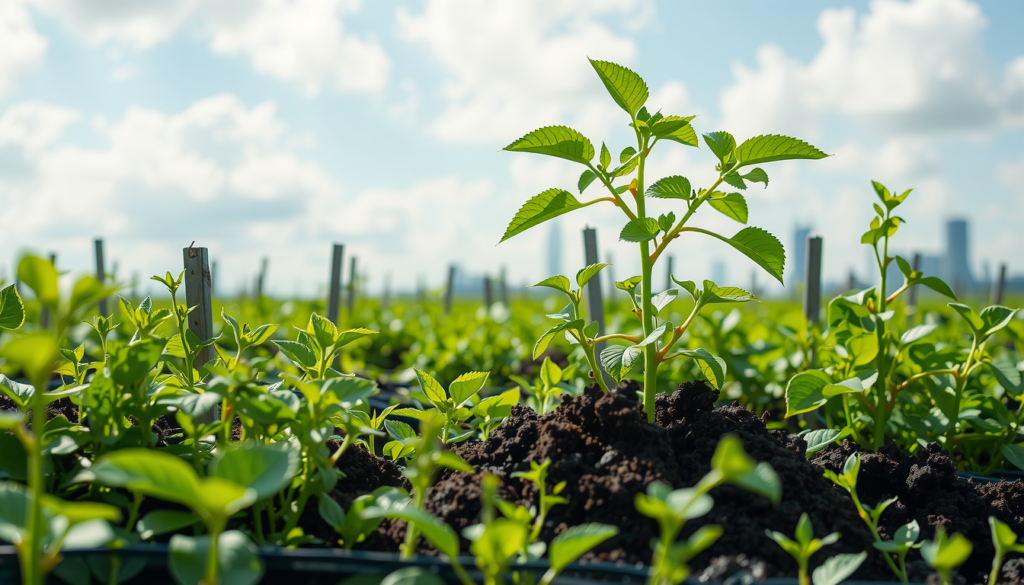The Growth of Green Technologies: Innovating for a Sustainable Future
As the world grapples with the effects of climate change, green technologies have emerged as a critical solution to reduce environmental impact and promote sustainability. From renewable energy sources to eco-friendly transportation, these technologies are helping to pave the way toward a greener future.
This article explores the rise of green technologies, their current applications, and how they can drive sustainable change in various industries.
Renewable Energy: Powering the Future
Renewable energy sources like solar, wind, hydro, and geothermal are central to the transition from fossil fuels to cleaner alternatives. These technologies are rapidly advancing and providing scalable solutions to meet the world’s growing energy demands.
- Solar Energy: Solar panels are becoming more efficient and cost-effective, making solar power an increasingly viable option for homes, businesses, and even entire communities.
- Wind Power: Wind farms, both onshore and offshore, are generating significant amounts of clean energy. Wind turbines are now being built to operate in a wider range of conditions, making wind power more accessible.
- Hydropower: While traditional hydroelectric dams have been around for decades, new innovations in hydropower are focusing on low-impact solutions like micro-hydro turbines and tidal power.
Electric Vehicles and Sustainable Transportation
Electric vehicles (EVs) have revolutionized the transportation sector by offering an eco-friendly alternative to gasoline-powered cars. With advances in battery technology and increased government support, EVs are becoming mainstream.
- Electric Cars: Companies like Tesla, Rivian, and traditional automakers are producing a growing range of electric vehicles, from compact cars to luxury sedans and trucks.
- Public Transportation: Cities around the world are investing in electric buses and trains, reducing emissions and improving urban air quality.
- Urban Mobility: Innovations in electric scooters, bikes, and shared mobility solutions are reducing the environmental impact of short-distance travel.
Smart Buildings and Energy Efficiency
Green technologies are also transforming how buildings are designed and operated. Smart building technologies optimize energy use and reduce waste through automation, sensors, and energy-efficient materials.
- Smart Thermostats: Devices like Nest and Ecobee allow homeowners and businesses to reduce energy consumption by learning user preferences and adjusting temperature settings accordingly.
- Energy-Efficient Appliances: The development of appliances that use less energy, such as LED lighting and low-water usage fixtures, contributes to overall energy conservation.
- Building Insulation: Advanced materials are making it possible to build homes and offices that require less energy for heating and cooling, reducing overall carbon footprints.
The Circular Economy: Reducing Waste and Promoting Reuse
The circular economy is a system where resources are reused, refurbished, and recycled to reduce waste and the consumption of finite resources. This model contrasts with the traditional “take, make, dispose” approach.
- Recycling and Reuse: Innovations in recycling technologies allow for more materials, such as plastic and metal, to be reused, reducing waste in landfills.
- Product Design: Many companies are designing products with their end-of-life in mind, making it easier to repair, upgrade, or recycle items like electronics and furniture.
- Zero-Waste Initiatives: Businesses and consumers are increasingly embracing zero-waste practices, reducing the demand for new resources and lowering environmental impact.
Conclusion
Green technologies are not just a trend; they are essential to addressing the environmental challenges of the 21st century. By adopting and investing in renewable energy, sustainable transportation, smart building technologies, and the circular economy, we can reduce our carbon footprint and create a more sustainable world for future generations.
